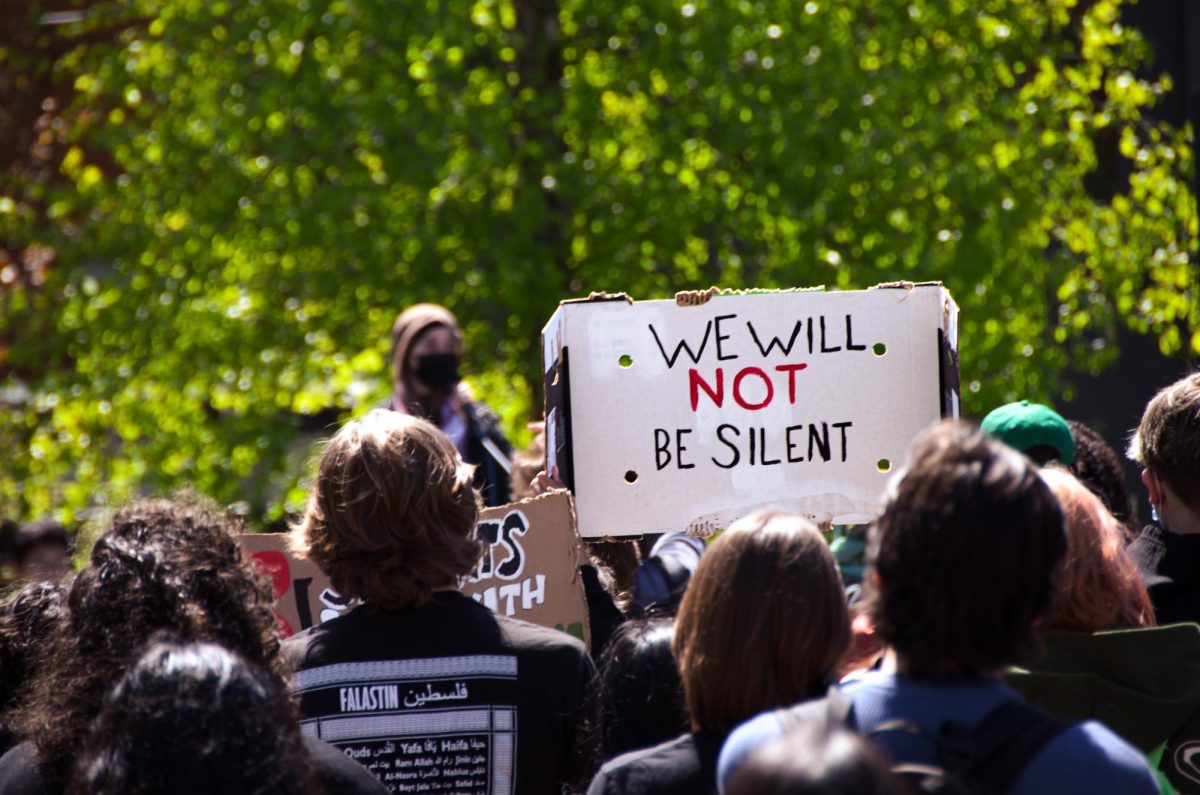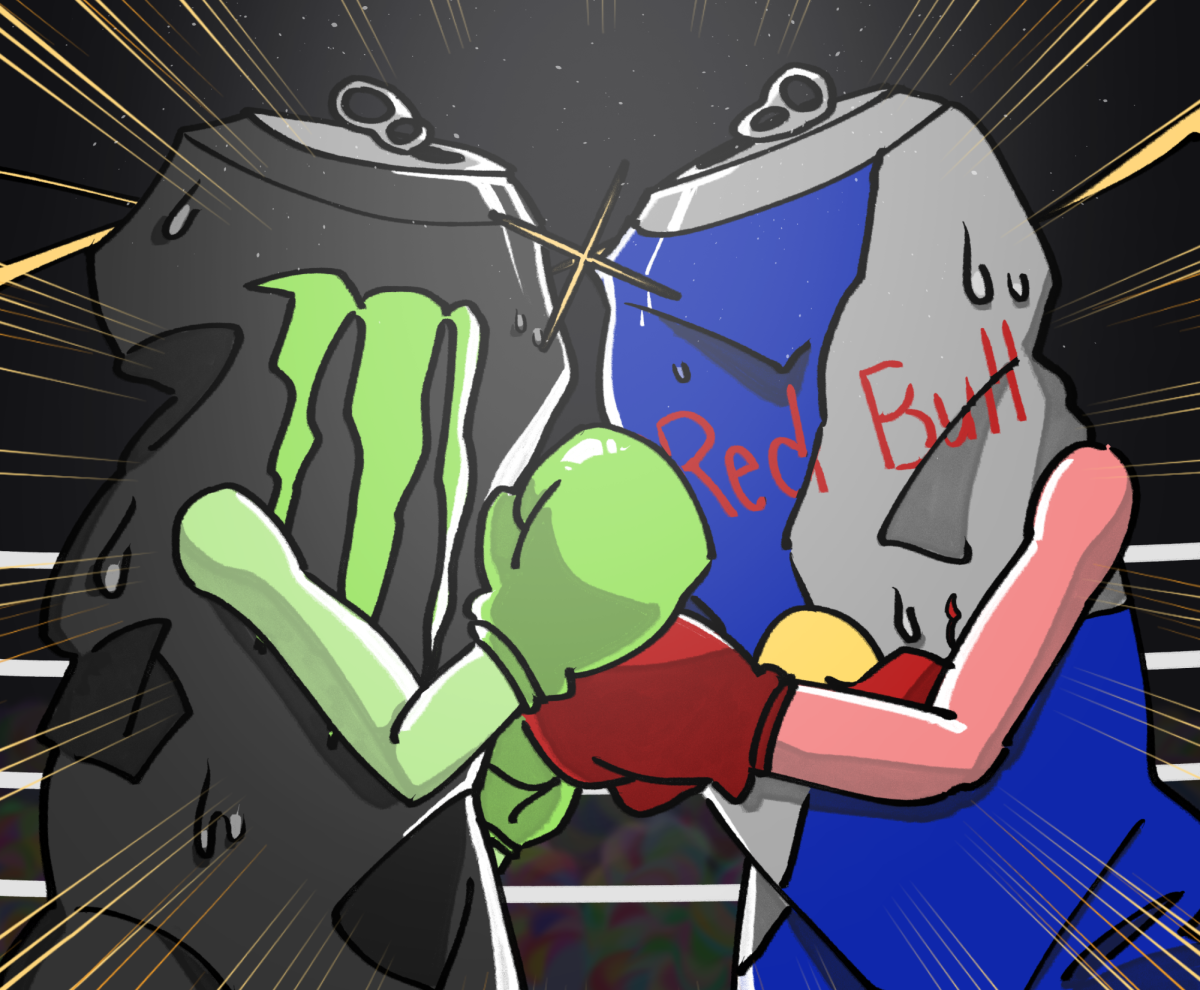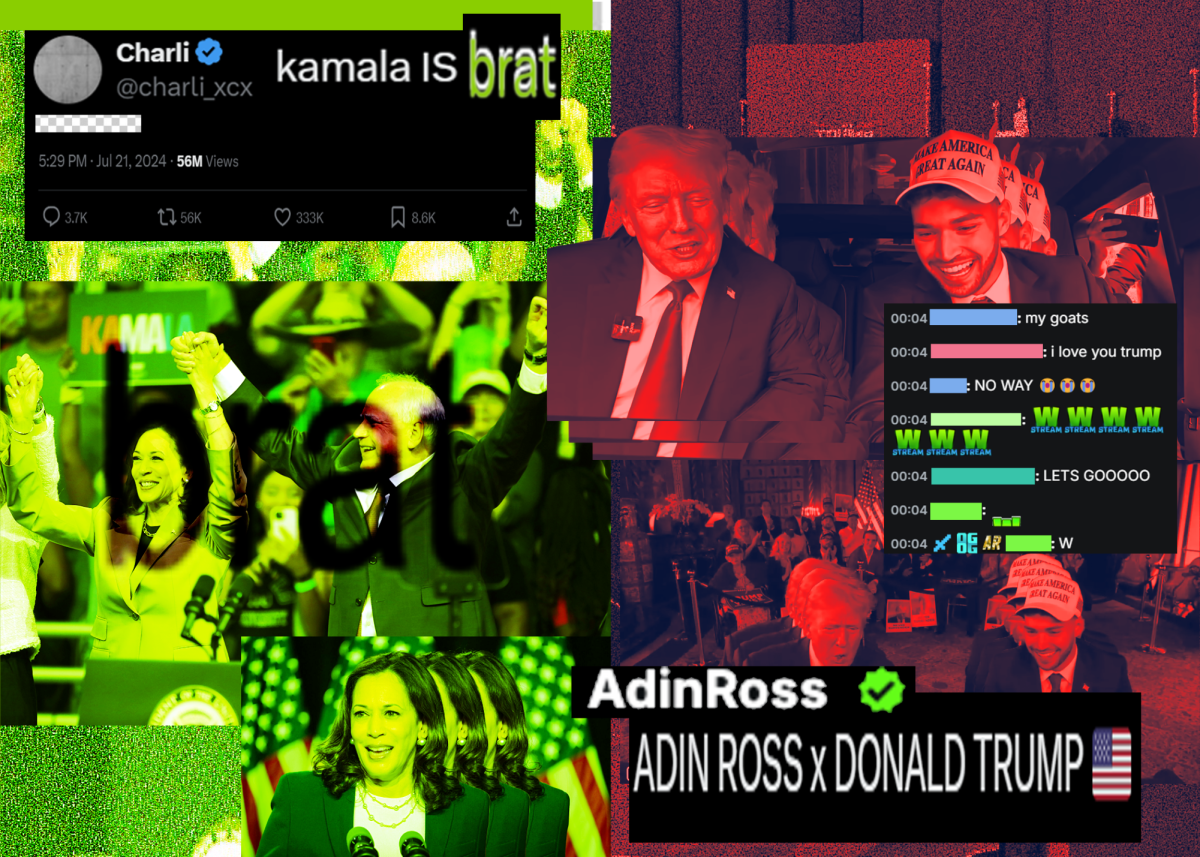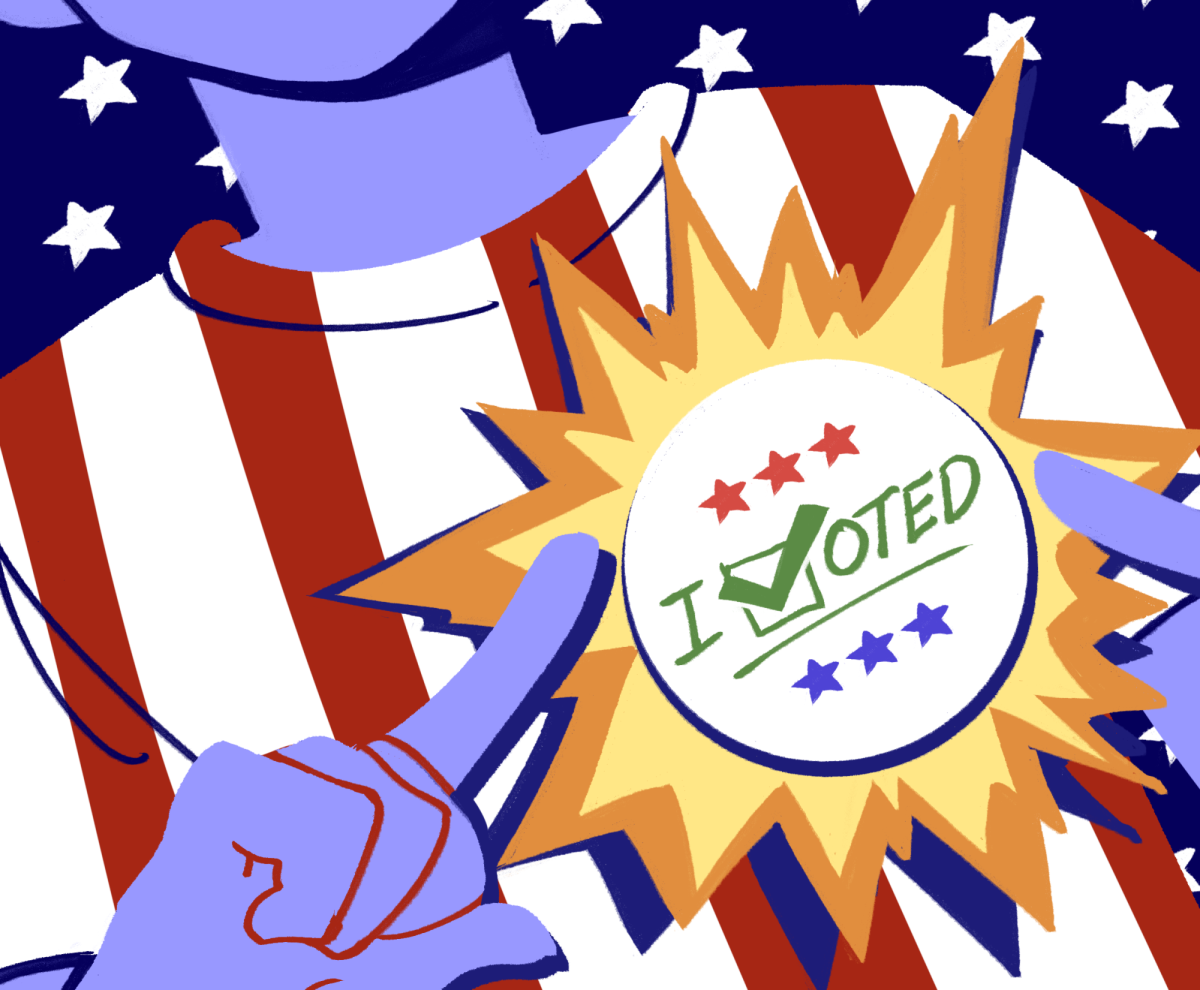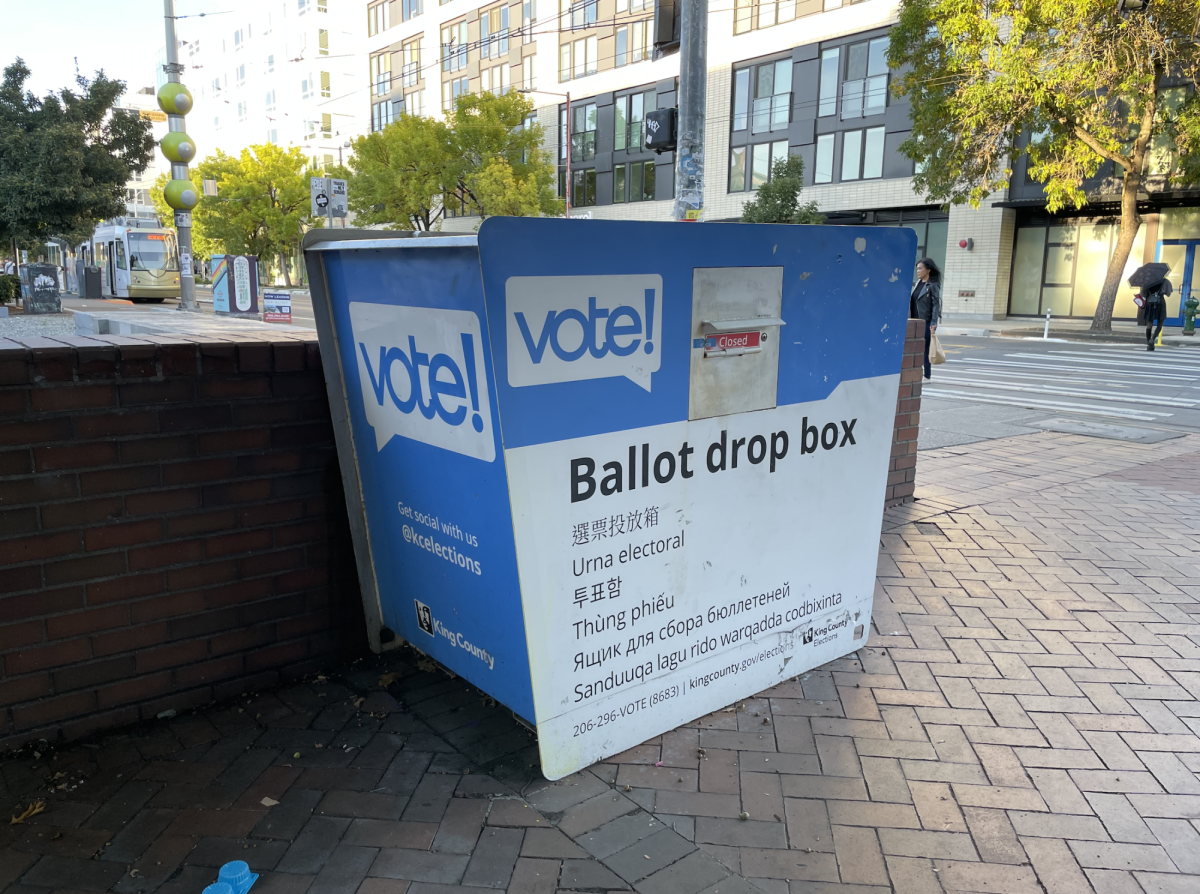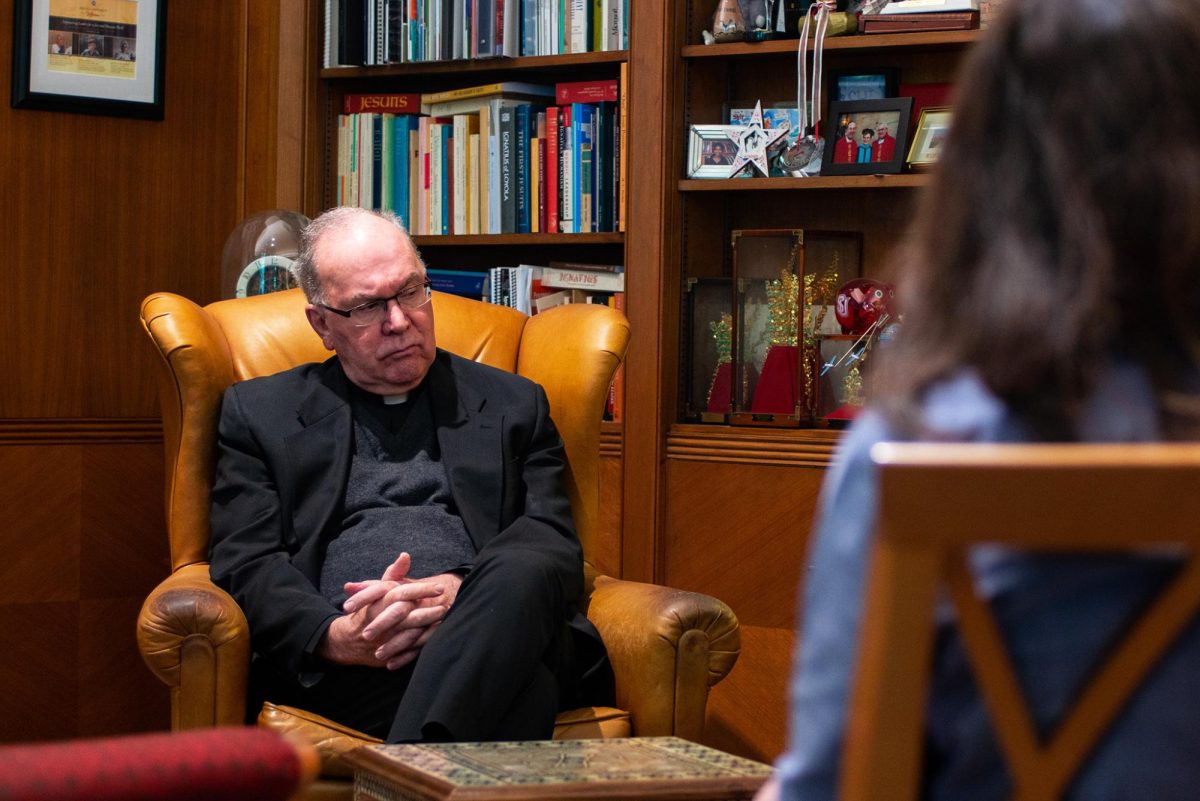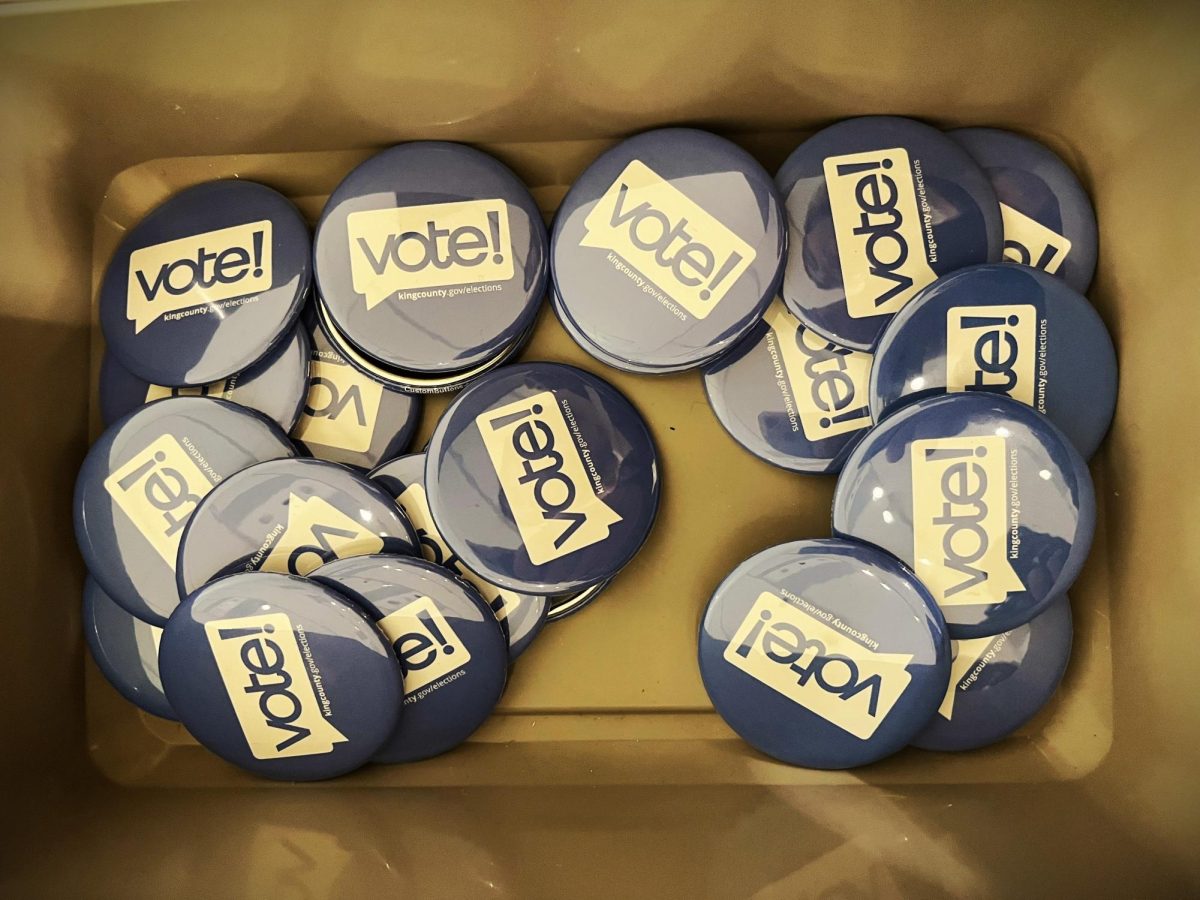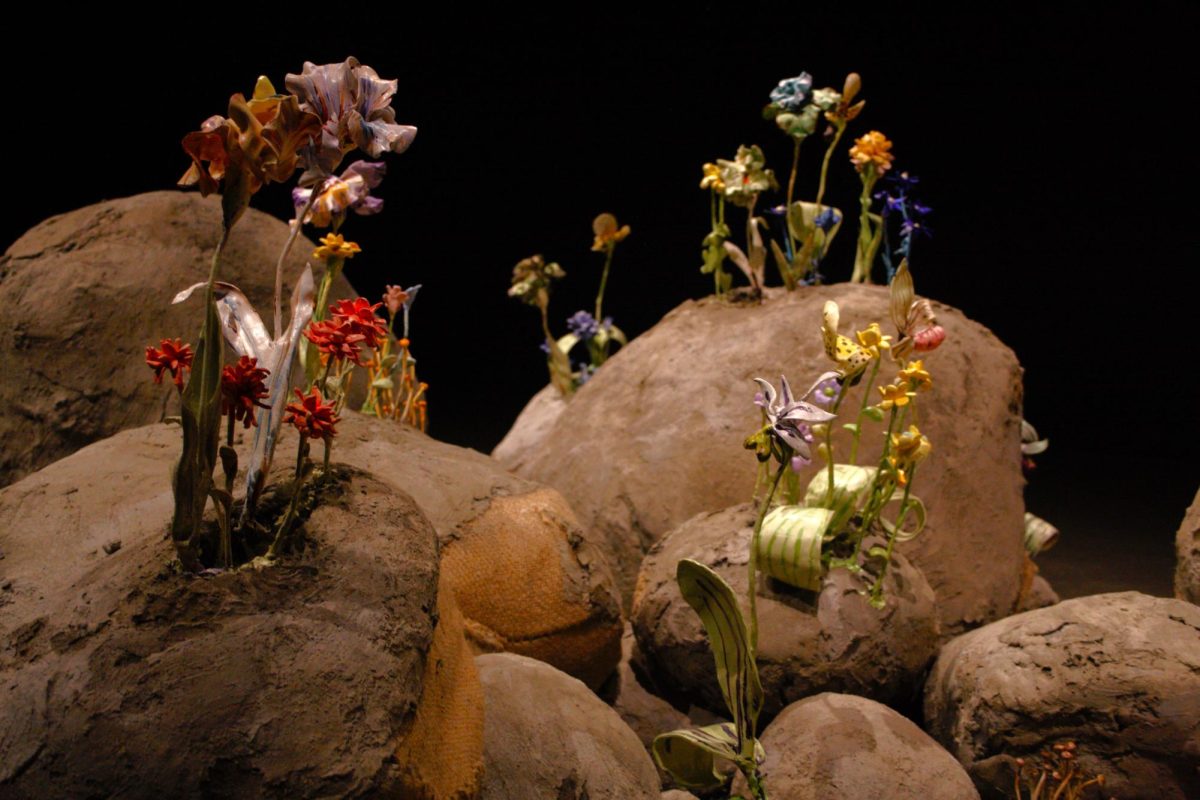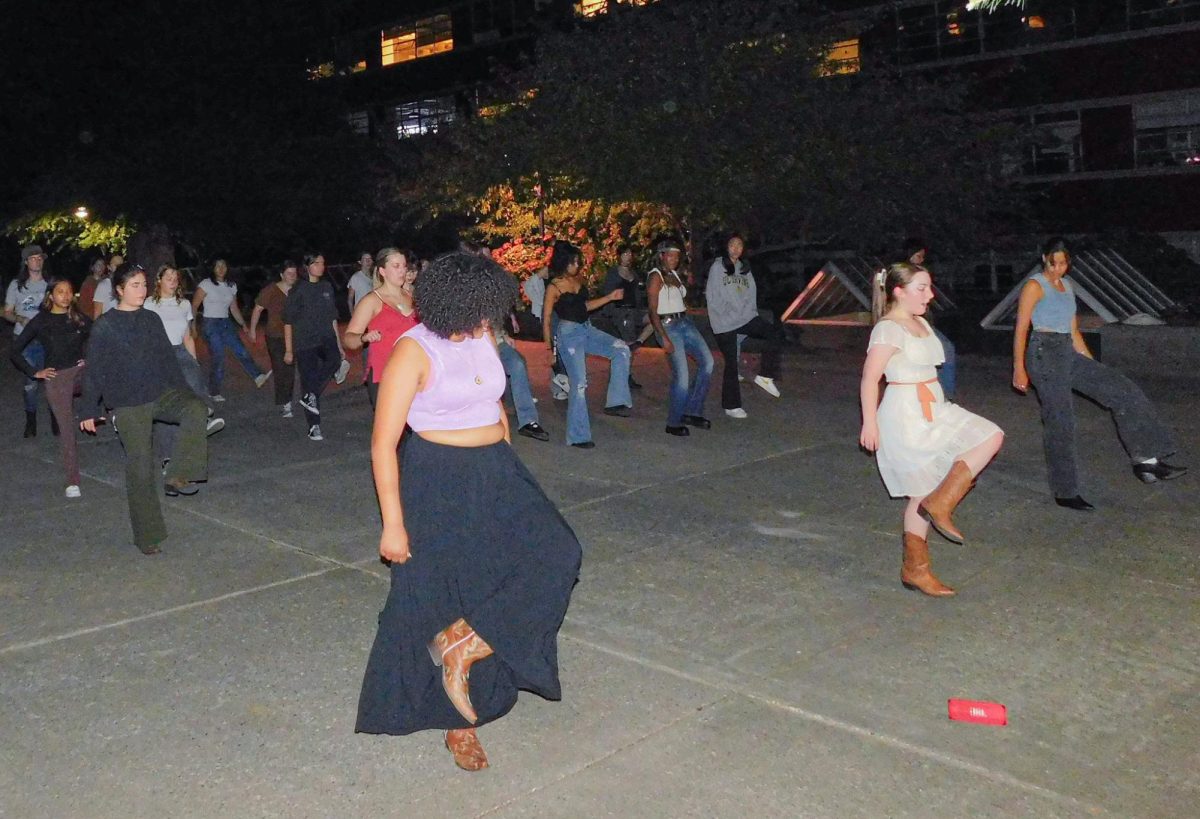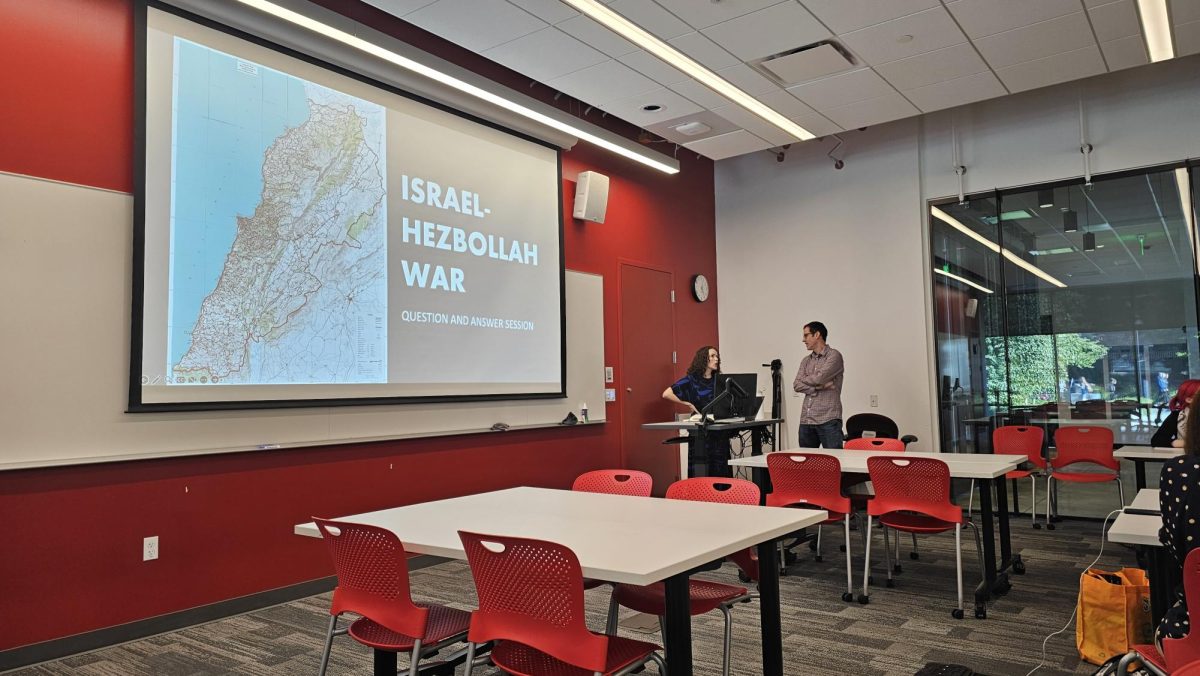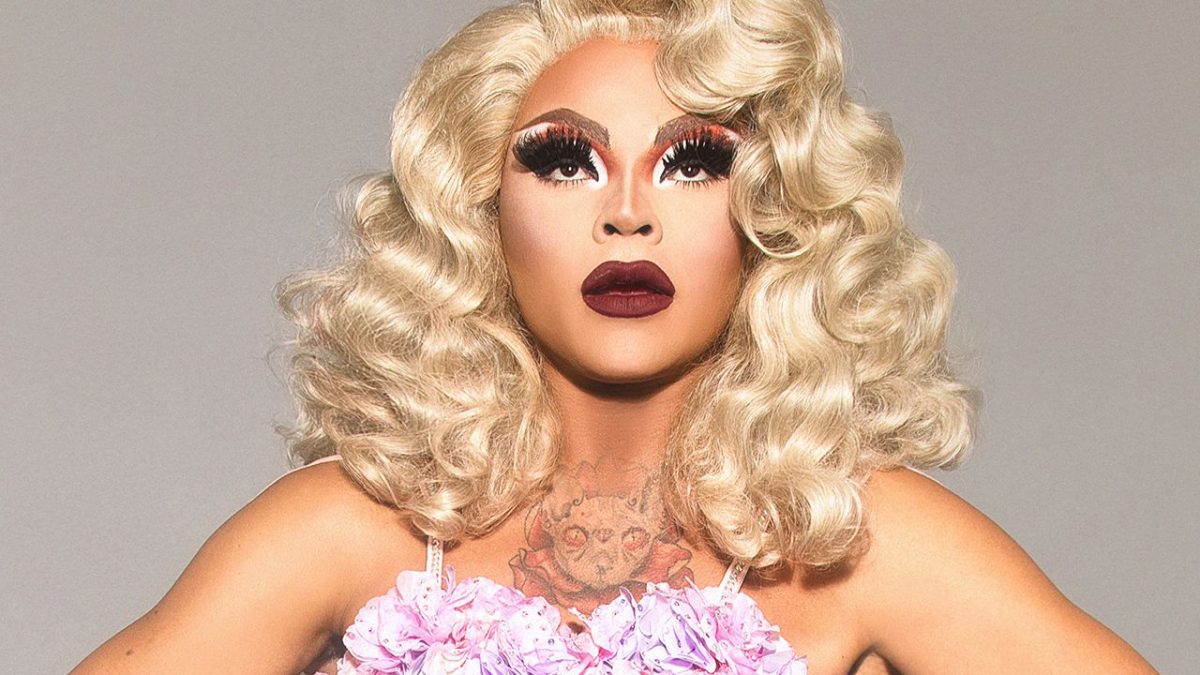Seattle University has seen multiple demonstrations, teach-ins and announcements; a speaker series; and online and on-campus debates surrounding administration support for a ceasefire and expression of solidarity with Palestine, funding and endowment transparency, and the university’s ties to Boeing particularly heightened since Oct. 7. In response to continued student and faculty efforts, President Eduardo Peñalver has emphasized the university’s role as a space for free expression, and sees adopting an official university perspective as being antithetical to that mission.
“Seattle University does not take positions on world issues in order to preserve the freedom for members of our academic community to express their own views. This is not the same as a blanket assertion of neutrality. But, as a university, the primary way we take positions is through our actions, and always at the same time with an affirmation of the importance of the academic freedom of those who may disagree,” Peñalver wrote to The Spectator.
Despite this stance, one of the main sources of student frustration is the perceived neutrality of the university. This frustration is compounded by students’ alleged difficulty navigating the policies within the student code of conduct regarding demonstrations and concerns about certain speakers who have and haven’t been allowed on campus.
Reign Riley, a member of the Direct Action Coalition, said that even though the university is attempting to steer away from using direct terms of neutrality, they believe that is the position Seattle U is trying to take. However, as a university that prides itself on social justice values, the lack of an official statement from Peñalver has created discord among the student body.
“You get yourself into tricky territory when you set yourself up as an institution set on moral values like humanity, equity and justice. Once you start loading in those morals into how you want to operate in the world, you can’t be neutral because justice is never a neutral thing,” Riley said.
Protests on campus regarding the issue have been semi-regular and have garnered significant university attention, thanks to coordinated and prominent displays. This spring, that coordination migrated off school grounds.
Most recently, May 2 was one of the first warm afternoons of the spring, a day where one would normally see students and passersby milling about campus. Instead, cries and chants from the 12th Avenue Square Park could be heard from blocks away as university students and other community members congregated for a demonstration. At the north entrance to campus, two Seattle U public safety officers watched the Administration building. In the south, another stood on the sidewalk facing Cherry Street and the demonstration.
The goal of the demonstration was to show solidarity with Palestine and the nationwide university encampments while calling for a permanent ceasefire. Protestors echoed the demands that were initially made at the rally back in November: that the university publicly acknowledge the “U.S. supported Israeli genocide of Palestinians” in a campus-wide email; cut ties with Boeing; and affirm and carry out the May 19, 2021 Student Government of Seattle University’s (SGSU) Resolution on Solidarity with Palestine.
In response to the student demonstration across the street, all buildings were locked and only accessible by ID swipe, with President Eduardo Peñalver later citing concerns at the Town Hall of non-campus actors trying to access buildings. By 1:25 p.m., the next block of classes was soon approaching. Small masses of confused students huddled outside of buildings, faced with front doors that seemingly wouldn’t open. No prior announcement had been made that campus would be locked down.
Acknowledging the concerns for safety when protests are held, Riley commented on how the university’s lockdown response sends a particular message to student activists, despite being an institution that instills social justice in the curriculum.
“You have to be aware as a president of what kind of image you’re going to put off. If you lock the doors to campus and public safety floating around, then you’re communicating to the students that ‘We don’t trust you,’” Riley said.
Though Seattle U recognizes the rights of students to express their views by protesting on or off campus, the current On Campus Demonstrations Policy has posed obstacles to students, as it requires demonstrations to be both approved and registered with the Center for Student Involvement 48 hours before the event.
A member from Seattle University’s Students for Justice in Palestine (SUSJP), who requested to remain anonymous, shared a frustrating experience when organizing their November rally. The prolonged process of registering their demonstration with the university barred them from advertising in a timely manner, adding to why the May 2 rally was held adjacent to Seattle U’s campus.
“To them [the On Campus Demonstration Policy] exists to facilitate student protest, but all it does is stifle and control it. World events happen at a super fast pace… in the same way, student demonstrations in response to these events also happen at a fast pace. We don’t want to have to wait a week to get approved for something that is happening right now,” the SUSJP member said.
Staff members face additional difficulties participating in demonstrations such as the one organized by SUSJP. If a free speech activity or demonstration is held during normal work hours, staff must either utilize their scheduled break time or take vacation leave to attend. Free speech activities are not accounted for under the Community Service Leave under Section 610 of employment policies.
An email from Jerron Lowe, vice president for human resources, was sent to staff across campus the day before the demonstration to remind them of the policy and to help clarify when participating in demonstrations does not conflict with the functions of their position on campus. The email stated that staff are free to engage in off-campus demonstrations. However, Lowe highlighted the On Campus Demonstrations Policy, which asks that staff wanting to be involved in demonstrations coordinate with their supervisors and deans. At the end of the email, notably, there was an emphasis on how staff members were to represent themselves.
“Lastly, it’s important to recognize that exercising your freedom of expression is allowable when done as an individual and not under your title or position at the university. This means that your personal views and opinions are entirely your own and do not represent the view of Seattle University unless explicitly stated otherwise,” reads the email from Lowe to staff members.
The line between personal and professional identity can be difficult to navigate particularly in a university setting, where students’ lives happen almost entirely on campus, professors’ work often focuses on current world events and faculty policies differ for on and off-campus demonstrations.
One professor who spoke at the rally felt they would not have been able to participate if it were on campus, and declined to comment given the possibility of professional retaliation or loss of employment. This fear is not unfounded—faculty members at the University of Texas at Austin, the University of Arizona, Cabrini University, Emory University and Indiana University have been officially disciplined or fired for demonstrating or commenting in support of Palestine.
Haashim Ameer, president of the Seattle University Muslim Student Association, believed that concerns about long-term professional repercussions diminished the presence of faculty at the demonstration. In light of the email, Ameer was disappointed about staff members being called on to draw lines between specific aspects of their identity.
“How do you separate that as ‘I’m a professor’… versus a human,” Ameer said.
Some faculty are navigating how to speak on the issue despite constraining factors. Assistant Professor of Film and Media Studies Benjamín Schultz-Figueroa expressed that regardless of the administration’s stance, the university and student body have the responsibility to decide amongst themselves what to support as a community, and that Seattle U as an institution is uniquely positioned in these conversations.
“We are not only responsible as scholars and students who need to investigate and question the world, we’re also responsible as members of this institution. And as members of this particular institution, we have both the right and the responsibility to know how our funds are being used, and what this institution sees as its relationship to these ongoing historical events,” Schultz-Figueroa said.
Following the demonstration, the President’s Town Hall took place May 7. While being an opportunity for the university community to interact directly with the President, it also celebrated recent university achievements: the Hedreen art collection donation, Seattle U being federally recognized as an AAPI-serving institution and updates on the process of the Mission Priority Examen.
Once the beginning portion of the Town Hall concluded, a Q&A session ended the meeting. Many of the questions reflected student concerns about how Seattle U is navigating the ongoing bloodshed in Gaza. One of the first audience questions came from a student whose voice broke as they asked why the President was hesitant to cut ties with Boeing. After a few minutes of conversation, the speaker said they would share written suggestions with the President, and they thanked one another.
Nearly an hour into the Town Hall, another student went up asking about university demonstration policies, and expressed a perception that the administration was opposing student protesters. The student and the President spoke over one another, and one staff member subsequently commented that they were concerned by the “argumentative tone” with which the president addressed students. President Peñalver thanked the faculty member for the feedback, but asserted that the administration has not criticized or vilified students.
Student Government of Seattle University (SGSU) President Isabelle Alamilla echoed the remarks made at the Town Hall, noting that the way Peñalver responded to students negatively impacted the quality of the forum.
“SGSU attended the President’s Town Hall and observed a notable gap between student concerns and the President’s responses. This disconnect not only underscored the importance of supporting students who courageously stood up to their beliefs but also highlighted a shortcoming in President Peñalver’s expected expression of compassion and empathy,” Alamilla wrote to The Spectator.
After the Town Hall, she and the SGSU executive team convened in an emergency meeting, strategizing on how to address student concerns and how they could offer support to those who felt unheard. Releasing a solidarity statement May 9, SGSU is now urging the administration to clarify what paths can be taken to enact change while pushing for increased collaboration and transparent communication. They’ve also formally requested that SGSU meet more frequently with administration to improve the university’s responsiveness to student concerns.
SUSJP executives also had a closed-door meeting with President Peñalver. Shortly following the meeting, SUJSP uploaded a post to Instagram quoting the President as saying the phrase “genocide is a contestable term” in reference to Palestine. Student reactions online were strongly negative, with the post garnering 30 comments critical of the President’s remarks, numerous reposts and nearly one thousand likes.
“What is contestable about 40,000 innocent lives lost? What is contestable about every university in Gaza being turned to rubble? What is contestable about hundreds of Palestinian children held in administrative detention, left to die in Israeli prisons?” the post’s caption read in part.
After the Town Hall, the Office of the President shared a campus-wide email on the “Conflict in Israel and Gaza” that detailed updates on student demands after meetings with student clubs and SGSU. This includes increased endowment transparency by holding an upcoming meeting with endowment managers and student organization leaders, a discussion between student advocates and the Board of Trustees on divesting from Boeing, and a new group under the Student and Campus Life office focused on addressing concerns regarding demonstration policies. Peñalver also reaffirmed his belief that statements directly from university administration are “largely empty gestures,” and that focusing on the actions of the university community is more meaningful.
Schultz-Figueroa hopes to see a more explicit affirmation from the administration of the freedom for faculty to teach on Israel and Palestine without fear of outside organizations pressuring them. He personally felt that the College of Arts and Sciences hosting Stand With Us (SWU) in March marked a serious moment of concern toward the university’s treatment of free speech on campus, given SWU’s past actions against students and professors on other campuses.
However, Schultz-Figueroa expressed that focusing solely on campus free speech in light of the bloodshed distracts from the horrors actually taking place. The death toll in Palestine is estimated to be 35,000, and over 2 million civilians have been displaced according to Palestinian health authorities.
“In particular, in Palestine, the numbers of dead, the unearthing of mass graves, the killing of civilians, of children; the stifling of supplies and humanitarian aid, the refusal to let aid through, and the mass funding of all of these efforts by the United States government: these are all issues that I think should be foremost on our mind and we should be discussing, frankly, on campus,” Schultz-Figueroa said.
Ultimately, demonstrations are unlikely to cease in the near future. Some activists point out the success of past protests on campus, such as the Matteo Ricci College sit-in, in achieving meaningful political change as an inspiration for continuing to make their voices heard.
“These campus demonstrations are most likely going to continue. I think the university trying to stay silent or neutral is not a good look. Not just from the perspective of supporting Palestinian rights, but the support of human rights in general… in every single instance, students were on the right side of history,” Ameer said. “The irony is that universities were initially against students [but now] use them as examples 20 years down the line. So I want to ask Seattle U, how are you going to respond now? And in 20 years from now when students are being admitted into SU, are you going to use us or any other movement as an example for positive [critique]?”
While the Seattle U community navigates free speech in a national context, campus policies and demonstrations, and relationships between students, faculty and administration, conflict continues to rage in Gaza. Actions taken in the coming weeks, months and years have the potential to alter not only university attitudes, but make tangible change.
Timeline of Relevant Events:
Nov. 7: Students for Justice in Palestine (SUSJP), Students for Sustainable Action (SSA) and United Filipino Club (UFC) hold a teach-in and rally for Palestine on campus; Jewish Voices for Peace were not allowed to co-host the event.
Nov. 27: CAS begins the “Confronting Conflict” speaker series.
April 1: Stand With Us is allowed on campus as an extension of the “Confronting Conflict” series, receiving faculty and student pushback.
April 30: President Peñalver sends out a university-wide email reaffirming campus free speech, which links to the Pope and Society of Jesus’ call for a ceasefire, though the university itself does not make a statement.
May 1, 4:41 p.m.: An email is sent out to faculty from Vice President for Human Resources Jerron Lowe detailing the policies at Seattle U on faculty free speech.
May 2, 12 p.m.: Demonstration across from campus is held; doors on campus are locked and only accessible by ID card swipe.
May 2, 1:30 p.m.: Demonstration ends; doors on campus are unlocked.
May 7: President’s Town Hall, where student speakers call for divestment from Boeing and university support of a ceasefire.
May 8: Closed-door meetings between the President and student clubs are held.
May 9, 6:27 p.m.: The Student Government of Seattle University sends out an email to “align [themselves] as united with the students” and calling for “more tangible action” from the administration.
May 9: SUSJP Instagram post goes up quoting Peñalver as saying that “Genocide is a contestable term,” which receives attention from students and alumni.
May 10, 2:04 p.m.: An email is sent out to campus on “Conflict in Israel and Gaza,” detailing agreements made with student organizations on Boeing, Code of Conduct, Endowment Transparency, and Statements from the administration.
Update 5/23/2024: A previous version of this article incorrectly stated that the email from Vice President Jerron Lowe was sent to faculty and staff, and that a faculty member made a comment on the tone at the Town Hall.




